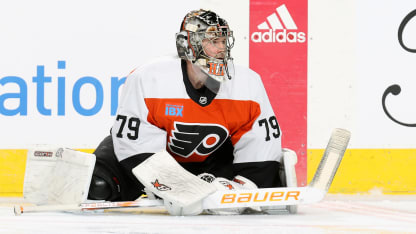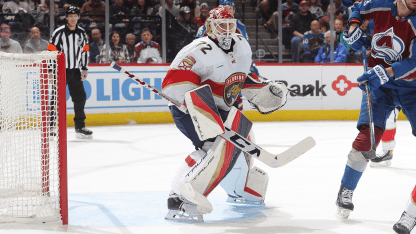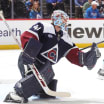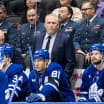NHL goalies like to make their equipment their own, whether through custom-painted masks or individualized graphics on their pads and gloves.
Now, the palette is expanding to customizable and personalized sticks. From tape jobs to custom grips, flex and feel, a lot of NHL goalies choose options unique to them, just as forwards and defensemen have for years.
In fact, NHL goalie sticks may be like snowflakes: no two are the same.
For some goalies, individual stick specs are about improved passing. For others, a customized grip can impact in a positive manner with how the blocker interacts with the stick squaring up on a shooter, how well it fits against the pants in a butterfly, or how well the stick seals the ice in paddle-down position.
For some, the desire to add a custom look inadvertently led to performance benefits.
That’s how Carter Hart of the Philadelphia Flyers discovered the benefits of rubbing a unique black pattern with a puck onto the white tape on his stick blade.
“I randomly started doing it like this at the beginning of this year,” Hart said of the black marks around the perimeter of the blade. “Originally, I would just do the bottom and now I do the whole thing. At first, I thought it just kind of looks cool to leave a little rectangle in the middle, but I feel better handling the puck too.”
Hart isn’t sure why that is, conceding it may be a mental thing, but feels it adds grip when the puck contacts the blade of his stick, while adding the ice doesn’t stick to the blade as much.
He’s not the first to believe the black marks help puck handling.
“When I go out to play the puck, I can see my blade at all times,” said Boston Bruins goalie Linus Ullmark, who places black marks on the top, bottom and corner of his blade. “When you’re out in the white ice, a white blade can be hard to see, but this is easy.”
Ullmark also has a custom blade, curve, shaft and lie on the Bauer stick he uses. It was employed to launch a puck over everyone, land it near the far hash marks and become the 13th goalie to score a goal -- just the eighth by shooting it into the net -- in a 3-1 win against the Vancouver Canucks on Feb. 25.
Those types of customizations are increasing as puck-handling becomes a more important part of the position, but personal preferences can be as unique as a goalie’s style of play. Some want more flex and varying kick points to improve passing and shooting, while others prefer a stiffer profile for passing and to stop hard rims placed behind the net by the opposition looking to establishing a forecheck.
Alex Nedeljkovic of the Pittsburgh Penguins is as adept handling and shooting the puck as any goalie and has scored two empty-net goals in the American Hockey League, including Nov. 17 of this season, and one in the ECHL.
But he prefers a notably stiffer Warrior stick than Tristan Jarry, his playing partner with the Penguins. Jarry has more flex in the model he used to become the 14th goalie to score a goal -- and ninth to shoot it in -- on Nov. 30 against the Tampa Bay Lightning.




















